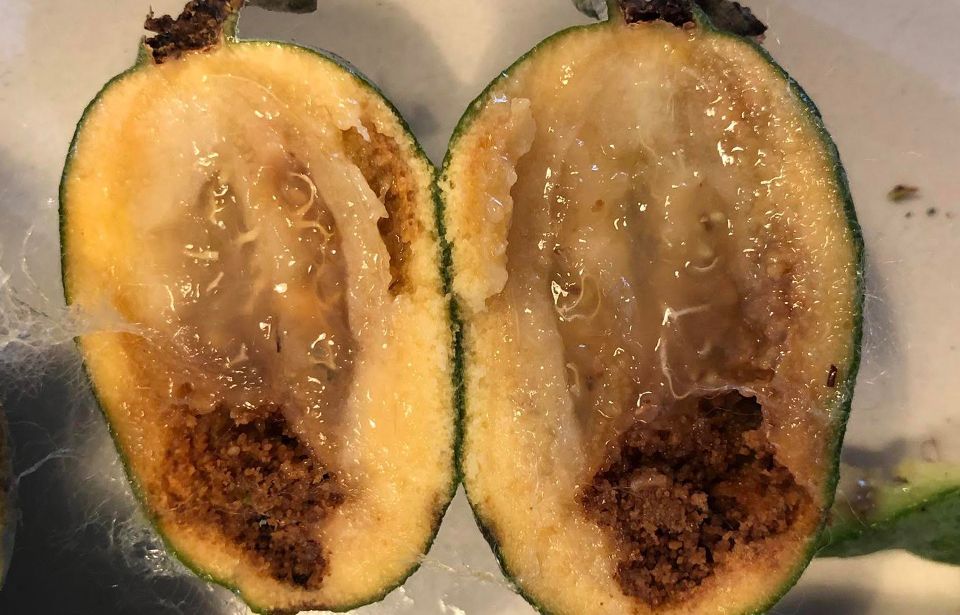Pest invasion threatening feijoas forces community action
• May 1, 2019

The presence of the Guava moth can be identified by the small holes they’ve drilled in the skin of the fruit, along with tunnels and larvae inside. Photo: Isabella Durant
An insect is drilling through fruit orchards in an Auckland suburb yet again, and residents believe that it will continue unless community-wide action is taken.
Many Aucklanders are seeing the guava moth, an established pest in Northland, ruin their feijoas.
Waterview residents say their suburb has been affected dramatically over the last two years because of the pest, and now realise that the community needs to act together.
Plant and Food Research scientist, Asha Chhagan, says because the guava moth has such a broad host range and the ability to spread so quickly, residents will need to take action together to get on top of the issue.
“Just because you’re looking after it in your property, you’re always going to have a population of it in your neighbour’s garden or somewhere in your community.
Dr Chhagan says there needs to be a bigger emphasis on management and control of the moths.
The pest made its way south to Auckland a few years ago.
The female guava moths lay their eggs on the fruit, and upon hatching, the larvae drill into the flesh.
Christo Van der Walt thought his actions taken last year were enough to prevent the problem this season, but he has still had to dispose of 99 per cent of his feijoas this year because of infestation.
“I kind of thought last year when we cleaned up everything, maybe it would be gone, but it wasn’t, I now know it’s quite a big process and a mission to get rid of.
“I saw some of the fruit that I left for a week and the eggs had just multiplied inside. If they’re lying on the ground for quite a while, they really multiply fast,” he says.
Infestation may also make the fruit appear bruised and cause it to drop early.
Mr Van der Walt, a Waterview resident, says the issue seems manageable, but action needs to be taken at a wider level.
“It sounds like it needs to be a community-wide thing.
“If I carry out a treatment process in my tree, but there’s a neighbour that hasn’t done anything, it’ll still continue.”
Margi Watson has dealt with the same issue on her property for the last two fruit seasons and says that using pesticides, as recommended by plant centres, would be the last resort for her.
She also hopes to see community action as a lot of her fruit is going to waste.
“We've lost about 50 per cent of our feijoa fruit this year, so sadly for us, no feijoa ice cream is being made because we just don’t have enough.
“My preference would be for communities to tackle the issue given its been present for a couple of decades,” said Ms Watson.
Dr Chhagan says that the guava moths are an issue for growers and established fruit producers as well, especially in Northland.
“It has become such an issue that some of them have actually pulled out their feijoa trees and decided to not continue growing them because it’s no longer cost effective for them to do that.”


‘Strong, proud and skilled' - Māori tradeswomen use social media to inspire other wāhine
Haley Doig • June 26, 2025




‘Strong, proud and skilled' - Māori tradeswomen use social media to inspire other wāhine
Haley Doig • June 26, 2025